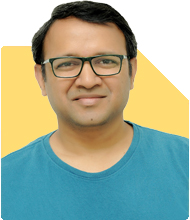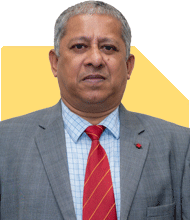Hi sir, present my age is 22 and my annual income is 532000.So by retirement I need huge corpus can u suggest me
Ans: Retirement planning is crucial for ensuring financial stability in your golden years. At 22 years old, you're at a perfect age to start planning. Starting early allows you to harness the power of compounding, which can significantly grow your investments over time. Your annual income of Rs 532,000 provides a good base to start building your retirement corpus.
The Importance of Starting Early
Starting your retirement planning early is a wise decision. With a long investment horizon, you can afford to take more risks initially and potentially earn higher returns. Over time, you can gradually shift to safer investments as you approach retirement. This strategy helps in building a substantial corpus with less stress.
Setting a Retirement Corpus Goal
To set a retirement corpus goal, consider your current lifestyle, future needs, inflation, and life expectancy. While it's hard to predict exact future expenses, estimating generously ensures you don’t fall short. Think about your desired lifestyle post-retirement, including travel, hobbies, healthcare, and daily living expenses.
Why Mutual Funds Are Ideal
Mutual funds are a versatile investment option for building a retirement corpus. They offer professional management, diversification, and the potential for high returns. There are various types of mutual funds tailored to different investment horizons and risk appetites.
Active vs. Passive Funds
You might come across index funds or ETFs while researching mutual funds. These passive funds track market indices and often have lower fees. However, they might not be the best option for long-term goals like retirement.
Passive funds lack flexibility to adapt to market changes. They simply follow the index, whether it’s up or down. This approach might limit growth opportunities, especially in a dynamic market.
Actively managed funds, overseen by experienced fund managers, aim to outperform the market. They adjust the portfolio based on market conditions and economic trends. This active management can potentially lead to higher returns, which is beneficial for a long-term goal like retirement.
Disadvantages of Direct Funds
Direct funds may attract investors due to lower expense ratios. However, they require significant market knowledge and constant monitoring. Managing direct funds without professional guidance can be challenging.
Regular funds, invested through a Mutual Fund Distributor (MFD) with a Certified Financial Planner (CFP) credential, offer professional advice and support. This guidance ensures your investments align with your retirement goal, considering market conditions and personal financial circumstances.
Types of Mutual Funds to Consider
Equity Funds
Equity funds invest in stocks and aim for high returns. They are suitable for long-term goals like retirement, as they can potentially offer significant growth over time.
Balanced Funds
Also known as hybrid funds, these invest in both equities and debt. They provide a balanced approach, offering moderate returns with reduced risk. They are ideal for a diversified retirement portfolio.
Debt Funds
Debt funds invest in fixed-income securities like bonds and treasury bills. They are less volatile than equity funds and provide stable returns. As you approach retirement, increasing allocation to debt funds can preserve your capital.
Aggressive Hybrid Funds
These funds have a higher allocation to equities compared to balanced funds but still maintain a significant portion in debt. They offer the potential for higher returns while cushioning against extreme market volatility.
Dynamic Bond Funds
These funds adjust their portfolio duration based on interest rate changes. They can take advantage of varying market conditions, making them a flexible option for a long-term investment like retirement.
Systematic Investment Plan (SIP)
A Systematic Investment Plan (SIP) allows you to invest a fixed amount regularly in mutual funds. This method instills discipline and benefits from rupee cost averaging. You buy more units when prices are low and fewer when prices are high. Over time, SIPs can help build a substantial retirement corpus.
Importance of Diversification
Diversification reduces risk by spreading investments across different asset classes. For your retirement portfolio, a mix of equity and debt funds is ideal. Equities provide growth, while debt offers stability. Proper asset allocation based on your risk tolerance ensures your portfolio is not overly exposed to market fluctuations.
Role of Certified Financial Planners
Engaging a Certified Financial Planner is beneficial for retirement planning. They offer personalized advice, helping you choose suitable mutual funds and maintain discipline. They also assist in monitoring your portfolio and making necessary adjustments.
Tax Efficiency
Mutual funds offer tax benefits that can enhance your returns. Equity funds held for over a year qualify for long-term capital gains tax at a lower rate. Hybrid Debt funds held for over three years benefit from indexation, reducing the tax burden. Understanding these nuances helps in maximizing your returns.
Monitoring and Rebalancing
Regularly reviewing your portfolio is essential to ensure it stays on track. Market conditions and personal circumstances change, necessitating adjustments. Rebalancing involves realigning the portfolio to the desired asset allocation, ensuring it meets your retirement goal within the stipulated time.
Existing Investments
If you hold LIC, ULIP, or other investment cum insurance policies, consider their performance and costs. These products often have high charges and might not offer the best returns. Surrendering these policies and reinvesting the proceeds into mutual funds can be a better strategy for building your retirement corpus.
Emergency Fund
Before focusing solely on retirement savings, ensure you have an emergency fund. This fund should cover 3-6 months of expenses, providing a safety net for unforeseen circumstances. It ensures you don’t have to dip into your retirement savings for emergencies.
Understanding Risk Tolerance
Every investor has a different risk tolerance. Assessing yours is crucial to choose the right mix of mutual funds. Discussing your comfort level with a Certified Financial Planner helps in aligning your investments with your risk appetite.
Financial Discipline
Staying disciplined in your investment approach is crucial. Regular investments, avoiding unnecessary withdrawals, and sticking to your plan ensures you reach your retirement goal. Financial discipline is the foundation of successful retirement planning.
Reviewing Insurance Needs
Adequate insurance coverage is essential. Ensure you have sufficient health and life insurance before focusing on investments. This protects your savings and ensures your financial plan remains intact in case of unforeseen events.
Setting Realistic Expectations
While mutual funds can offer good returns, it’s essential to have realistic expectations. Understand that investments are subject to market risks, and returns can fluctuate. Having a clear understanding helps in staying committed to your investment plan.
Leveraging Professional Advice
Certified Financial Planners offer comprehensive advice tailored to your goals. They assist in selecting suitable mutual funds, planning investments, and making informed decisions. Their expertise helps in navigating the complexities of financial planning.
Building a Contingency Plan
While planning for retirement, it’s wise to have a contingency plan. Life is unpredictable, and having a backup ensures your primary goal isn’t compromised. This might include an additional savings account or a short-term investment fund.
Advantages of Regular Funds
Regular funds provide continuous support from financial advisors. They help in managing investments, understanding market trends, and making informed choices. This guidance is invaluable, especially for long-term goals like retirement.
Avoiding Common Pitfalls
Avoid common mistakes like emotional investing, lack of diversification, or ignoring professional advice. Staying informed and disciplined is key to successful investment planning. Engage with your Certified Financial Planner regularly to stay on track.
Evaluating Fund Performance
Assessing the performance of mutual funds is vital. Look beyond past returns and consider factors like fund manager expertise, fund house reputation, and investment strategy. A thorough evaluation ensures you choose funds that align with your retirement goal.
The Power of Compounding
Compounding plays a significant role in wealth accumulation. The earlier you start, the more you benefit from the power of compounding. Investing regularly in mutual funds can significantly grow your corpus over time.
Building a Retirement Corpus Step-by-Step
Assess Current Financial Situation
Evaluate your income, expenses, and savings. Determine how much you can comfortably invest each month towards your retirement goal.
Set Clear Goals
Define your retirement lifestyle and estimate the required corpus. Consider inflation and future expenses.
Choose Suitable Mutual Funds
Select a mix of equity and debt funds based on your risk tolerance and investment horizon. Consult a Certified Financial Planner for personalized advice.
Start SIPs
Begin investing through Systematic Investment Plans. Regular contributions help in building a substantial corpus over time.
Monitor and Rebalance
Regularly review your portfolio and make necessary adjustments. Rebalancing ensures your investments remain aligned with your retirement goal.
Stay Disciplined
Stick to your investment plan and avoid unnecessary withdrawals. Financial discipline is key to achieving your retirement corpus.
Final Insights
Planning for retirement at 22 is a smart move. With a long-term horizon, you can leverage the power of compounding and build a significant corpus. Mutual funds offer an excellent option for this, providing diversification, professional management, and potential for high returns.
Engage with a Certified Financial Planner for personalized advice and ongoing support. They help in selecting suitable funds, planning investments, and staying disciplined. Regularly review and rebalance your portfolio to ensure it remains aligned with your retirement goal.
Avoid common pitfalls, stay informed, and maintain financial discipline. With the right approach, you can accumulate the desired corpus for a comfortable and secure retirement.
Best Regards,
K. Ramalingam, MBA, CFP,
Chief Financial Planner,
www.holisticinvestment.in











.jpg)













